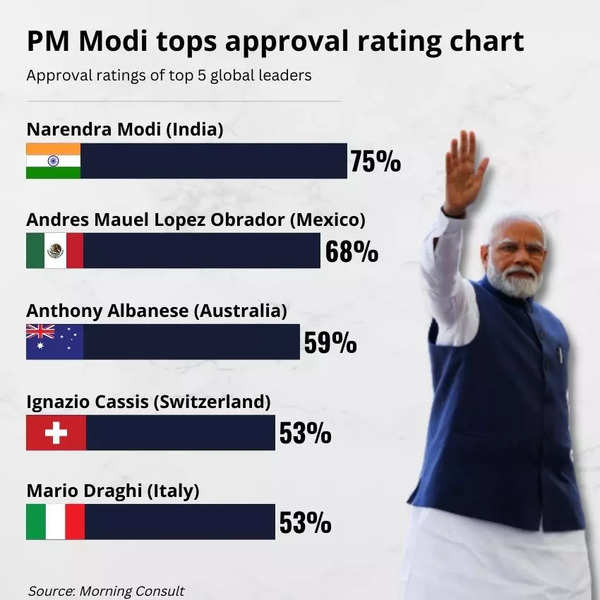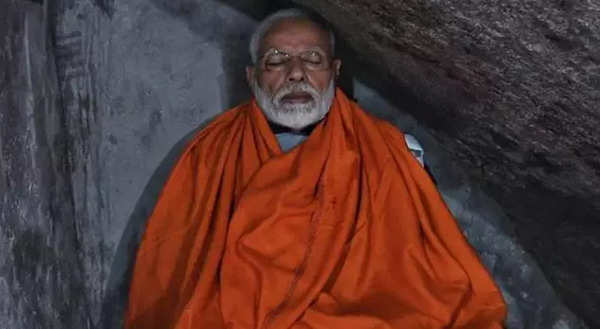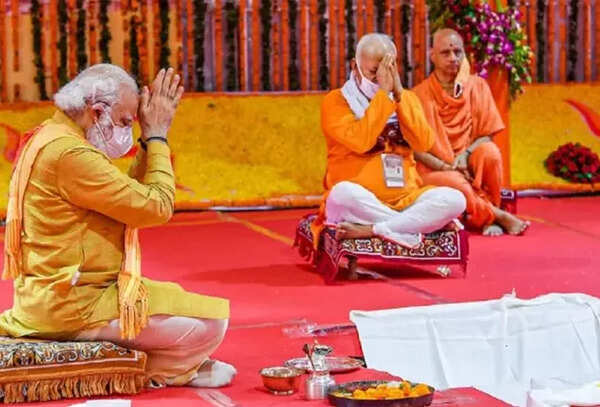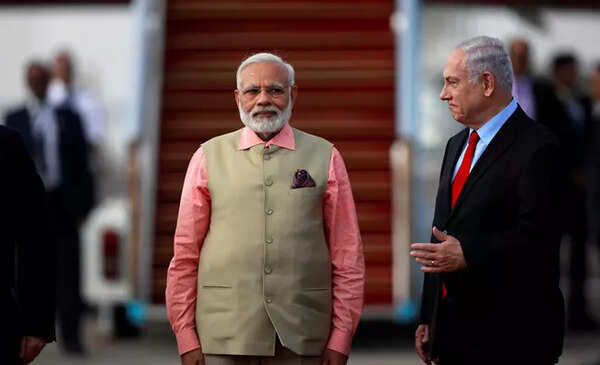On his 72nd birthday, here are some interesting facts about Modi’s tenure and his rise to the top…
21 years in office
Prime Minister Modi was just 51 years old when he was sworn in as the Chief Minister of Gujarat in 2001. After serving as a dedicated party worker for many years, Modi finally found himself in the highest corridors of power. And since then never looked back.
PM Modi turns 72: Live Updates
After 7,650 days, Modi – now Prime Minister of India – continues his term in office. The only difference is that the headquarters has shifted from Gandhinagar to New Delhi.
Modi served 12 years and 227 days (4,607) as the Chief Minister of Gujarat from 2001 to 2014. He was elected as the 14th PM of India in 2014 and held the position for 3,036 days till September 17, 2022.
This makes Prime Minister Modi the longest-serving head of an elected government after Jawaharlal Nehru and Indira Gandhi. While Nehru and Indira did not serve as chief ministers, they held the office of prime minister for 6,130 and 5,829 days respectively.
4th longest serving PM
As prime minister, Modi has the fourth longest term, with more than 3,000 days in office as of 17 September. He follows Nehru, Indira and Manmohan Singh.
If Modi manages to remain in office till May 29, 2024, he will become India’s third longest-serving prime minister, surpassing Manmohan.
And to surpass Nehru’s record, Modi will have to remain prime minister till March 2031.
most popular global leader
PM Modi is the world’s most popular leader with an approval rating of 75%, according to a September 6-13 survey by American firm Morning Consult.
Modi has been at the top of the list for several weeks now, consistently garnering approval ratings of over 70%.
At 20%, his disapproval rating is also the lowest among all leaders.

The survey shows that PM Modi’s popularity exceeded 84% in April-May 2020 when COVID hit the world. This fell to 63% in 2021 when the government came under heavy criticism over the crisis during the second Covid wave.
As of late, PM Modi has consistently polled 74% or more, with Mexico’s Andres Manuel López Obrador topping the chart in second place.
Most followed active politician
If social media is a measure of popularity, then Modi is indeed one of the most popular leaders in the world today.
His combined social media following (Twitter, Instagram and Facebook) is around 200 million. Indonesian President Joko Widodo is second on the list with 76.5 million followers.
Even if we count former US Presidents Donald Trump and Barack Obama, who had a huge following on social media, Modi remains the second most followed global leader on social media.
At 223.4 million, only Obama has more followers than Modi combined.
Among the five most-followed global leaders who are currently serving as heads of state, Modi has the most followers on every platform: Twitter, Instagram and Facebook.
globe-trotting PM
Buoyed by his trademark warmth and public meeting with world leaders, Modi’s overseas tours have been one of the hallmarks of his tenure.
In his tenure as Prime Minister, Modi has made over 112 foreign trips covering over 60 countries across the world.
In comparison, his predecessor Manmohan Singh made 73 visits during his two terms. Modi still has almost 2 years left.
As Prime Minister, Modi has been to the US the most times with 7 visits so far. After this comes Germany’s number where Modi has gone 6 times.
He has visited countries like France, Russia and China 5-5 times.
During his second term in 2015, Modi visited 28 countries – the most state visits in a calendar year.
Notably, the foreign visits of the Prime Minister have led to fewer foreign visits in 2020 since the COVID pandemic. He has recently returned from the SCO summit in Uzbekistan.
BJP’s biggest crowd puller
Thanks to his oratory skills and ability to draw crowds, Modi is today the most trusted politician in the country. Election after election BJP has got the benefit of this.
With Modi leading its campaign, the BJP became the first party since 1984 to win a majority of the Lok Sabha seats in 2014.
In 2019, it won a record 303 seats in the lower house with a vote share of 37.36 per cent.
Even across the states, the BJP has made a major showing over the years with Modi being the X-factor for the party in almost every election.
Since 2014, the BJP has won more than half of the assembly elections held in the country, winning mandates in states such as Uttar Pradesh, Karnataka, Haryana and almost the entire Northeast region.
Of the 51 state elections held since May 2014, the BJP has won 26, while its national rival Congress has won just 9.
Hindu credit
Over the years, Prime Minister Modi has emerged as a leader who does not shy away from practicing his Hinduism in public.
After becoming the PM for the first time in 2014, Modi went to his constituency Varanasi to participate in the Ganga Aarti. The visit set the tone for later years, with Modi proudly wearing the Hindutva identity on his sleeve.
From meditating in a holy cave near the Kedarnath temple to laying the foundation stone for the construction of a Ram temple in Ayodhya, PM Modi has been active in publicly showing his religious identity.

His numerous temple visits have helped the BJP consolidate the Hindu vote and project Modi as a “proud Hindu” who celebrates his religion.

The new political climate helped the BJP appoint Yogi Adityanath, a staunch Hindu figure, as the chief minister of UP in 2017.
Sabka Saath, Sabka Vikas, even in BJP
With Modi as its political leader, the BJP has largely changed from a “Brahmin-Baniya” party to a party that gives more representation to marginalized communities.
Over the past 8 years, the party has widened its social base to include a large crop of people belonging to tribal communities along with OBC and Dalit leaders.
In June 2020, PM Modi himself told in a video address to his party workers that the BJP was represented by 113 OBCs, 43 STs (Scheduled Tribes) and 53 SCs (Scheduled Castes) members in the Lok Sabha.
This means that 37.2% of the BJP’s Lok Sabha members were OBCs, 14.1% STs and 17.4% SCs.
In last year’s Union Cabinet expansion also, Modi inducted 27 OBC ministers, of whom five were given cabinet rank. The ministers represented different castes including Yadavs, Gurjars, Jats, Thakors, Lodhs, etc.
The cabinet also included 12 SC and 8 ST ministers. The government dubbed it the “Rainbow Council”, one of the most inclusive in recent history.
With careful balancing of caste equations, the BJP has been able to taste electoral success in crucial states where communities play a big role.
First of all
Modi’s 8-year tenure as Prime Minister has been marked for a memorable first time.
In January 2015, Modi hosted Barack Obama as the chief guest at India’s Republic Day parade. This was the first time an Indian PM hosted a US President for the event.
In July 2017, Modi became the first Indian Prime Minister to visit Israel. Some saw the visit as a turning point in India’s position on Israel.
In 2018, he also became the first Indian Prime Minister to make an official visit to Palestine.

PM Modi with former Israeli Prime Minister Benjamin Netanyahu at Ben Gurion International Airport near Tel Aviv, Israel (Reuters)
He was also the first PM to invite the heads of government of SAARC to his swearing-in ceremony in 2014.
Last year, he became the first Indian PM to chair a meeting of the United Nations Security Council.
PM Modi has also been honored with many international honors due to his leadership and oratory skills.
In 2019, Russia honored PM Modi with its highest state honour, the ‘Order of St. Andrew the Apostle’. In the same year, PM Modi was awarded the ‘Order of Zayed’, the UAE’s highest civilian award.
In 2020, PM Modi was awarded The Legion of Merit – a top US military honor – by former US President Donald Trump
In the latest 2021 edition of Time magazine, PM Modi was named among the 100 most influential people.
glossary, love for slogans
Pragati, Jam, Uday, Udaan, Punch Pran, 5P, Life Movement, AK-49, RSVP…
Since taking office, PM Modi has used dozens of acronyms and acronyms to name major government schemes or to attack his opponents.
For example, in 2017, Modi launched the UDAN Regional Connectivity Scheme to make air travel affordable for the common man. UDAN stands for Ude Desh ka Aam Aagrik.
He also started UDAY (Ujwal Discom Assurance Yojana) to get the power sector out of trouble.
He came up with the Lifestyle for the Environment (LiFE) movement to drive climate-friendly behaviour.
The Prime Minister called for making the country’s police force ‘smart’, which means ‘tough and sensitive, modern and mobile, alert and accountable, reliable and responsive and techno-savvy and trained’.
To realize the vision of a ‘New India’, he enlisted a formula of 5Ps – Performance, Process, Personality, Procurement and Preparation.
PM Modi also used innovative formulations to take a dig at his rivals.
For example, Modi coined the term “AK-49” while taking a jibe at Arvind Kejriwal’s 49-day government in Delhi.
To target the Gandhi family, he gives his spin to the RSVP, which stood for “Rahul, Sonia, Vadra, Priyanka”.
He replaced the word “mahagathbandhan” with “maha-milawat” to ridicule the opposition’s efforts to unite ahead of the 2019 elections.
(with inputs from agencies)